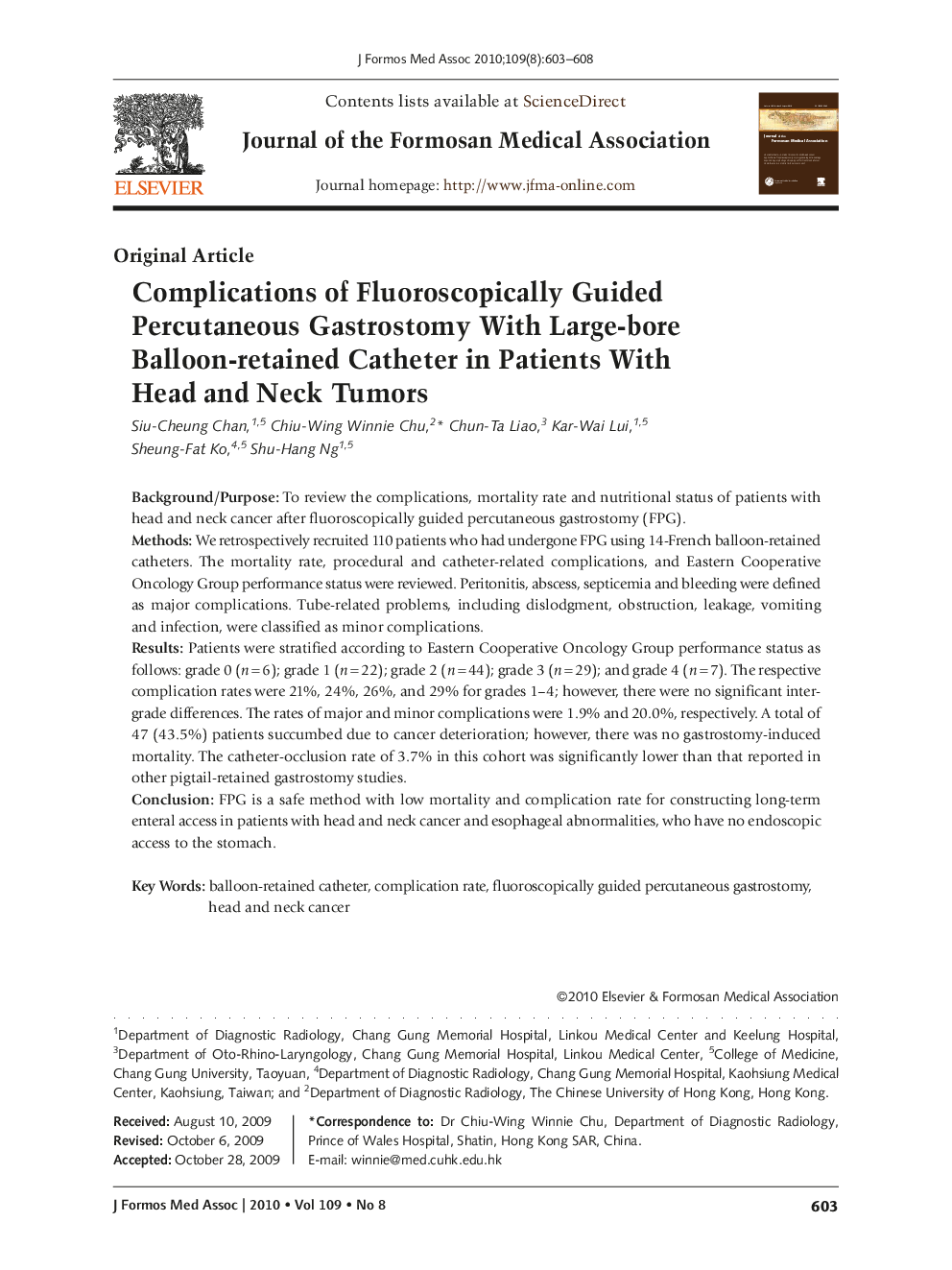| Article ID | Journal | Published Year | Pages | File Type |
|---|---|---|---|---|
| 3479646 | Journal of the Formosan Medical Association | 2010 | 6 Pages |
Background/PurposeTo review the complications, mortality rate and nutritional status of patients with head and neck cancer after fluoroscopically guided percutaneous gastrostomy (FPG).MethodsWe retrospectively recruited 110 patients who had undergone FPG using 14-French balloon-retained catheters. The mortality rate, procedural and catheter-related complications, and Eastern Cooperative Oncology Group performance status were reviewed. Peritonitis, abscess, septicemia and bleeding were defined as major complications. Tube-related problems, including dislodgment, obstruction, leakage, vomiting and infection, were classified as minor complications.ResultsPatients were stratified according to Eastern Cooperative Oncology Group performance status as follows: grade 0 (n=6); grade 1 (n=22); grade 2 (n=44); grade 3 (n=29); and grade 4 (n=7). The respective complication rates were 21%, 24%, 26%, and 29% for grades 1–4; however, there were no significant intergrade differences. The rates of major and minor complications were 1.9% and 20.0%, respectively. A total of 47 (43.5%) patients succumbed due to cancer deterioration; however, there was no gastrostomy-induced mortality. The catheter-occlusion rate of 3.7% in this cohort was significantly lower than that reported in other pigtail-retained gastrostomy studies.ConclusionFPG is a safe method with low mortality and complication rate for constructing long-term enteral access in patients with head and neck cancer and esophageal abnormalities, who have no endoscopic access to the stomach.
